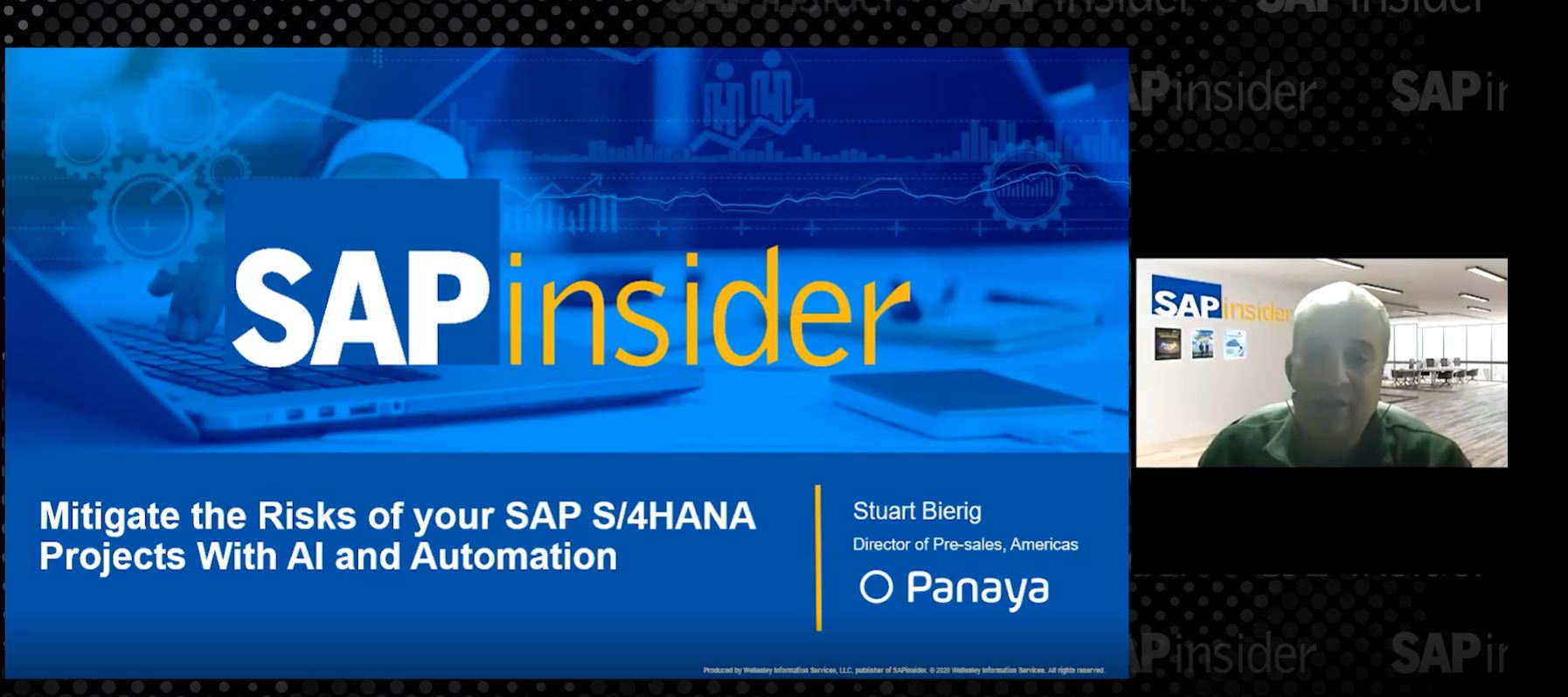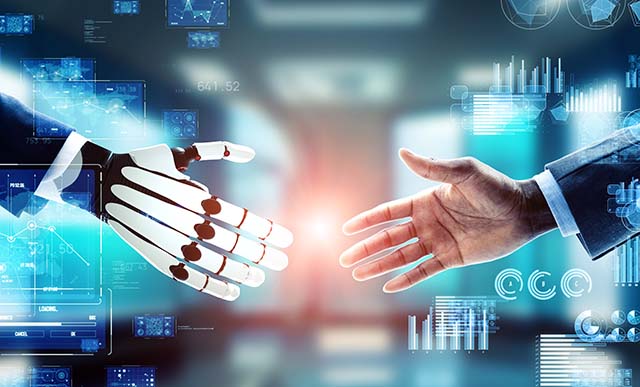Carrefour: AI in retail with SAP BTP
Meet the Authors
Key Takeaways
⇨ AI-powered transformation of retail is possible by deft data handling in SAP Business Technology Platform (BTP).
⇨ Experimenting is the key word to working with AI, and understanding what can be done with its power.
⇨ Carrefour’s BuyBye app comes powered through computer vision.
Carrefour is the eighth-largest retailer in the world by revenue, with almost 13,900 stores in over 30 countries and 335,000 collaborators globally. As Carrefour Belgium CTO Stijn Stabel says in one promotional video for the brand, the company can claim to “feed most of the world”.
The retail giant is also on a mission to leave behind the dependency on brick and mortar and become a digital retail company, whilst also consolidating its real-world presence with data insight and product innovation. Powering this journey between digital and physical has been SAP S/4HANA as its new ERP, and the data wins available when AI comes into the enterprise equation.
Sitting down with SAPinsider, Stijn Stabel is arguably the ideal CTO: a technologist with future-vision, as well as a pragmatic and realistic approach to what can be done in the here and now. In a period of AI hype, this is perhaps what an enterprise needs when it hears recent SAP messaging on all things GenAI. But away from the hype of conversational agents such as Joule, the story on SAP, AI and business is the same as ever it was, and that’s a tale of data and analytics. In retail, this comes to the fore on a grandiose level. What should an SAP client know about AI in the face of today’s supply chain worries, changing shopping trends and a limitless supply of data points when it comes to customers, employees and inventories?
Take Carrefour Belgium, which has more than 10,000 employees, operating 700 stores along with an eCommerce storefront and quick commerce options through third-party delivery apps. Stabel sees Carrefour Belgium as a great example of its parent company’s global transition into a digital retail brand, working on three fronts simultaneously.
The last pillar has seen Carrefour monetize its data for the likes of Mars and Unilever – a savvy move considering the company holds the largest amount of consumer data in Europe.
The backbone of the Belgian operation – and for the entire Carrefour Group – is SAP S/4HANA, with a migration of almost all of Carrefour’s SAP stack as implemented on Google Cloud greenfield-style. In Stabel’s view, Google Cloud is very good for data, with a cloud host being ideal for analytics of SAP data. Customizations come through with SAP Business Technology Platform (BTP), and this is where an AI-powered transformation of retail is made possible by deft data handling.
For that first pillar, algorithms make for better demand forecasting for Carrefour. An AI/ML mechanism used within SAP proposes what stores need to order on a daily basis and ensure they have stock in time seasonally.
“It’s not only giving us financial gains, but also favorable ESG credits – you don’t want food to go to waste,” says Stabel. “That’s against everything we stand for as a company and as a society.”
In other words, Carrefour knows customer demand and profits from it, while ensuring it does not over order. Music to the ears of SAP with its motto of helping the world to run better, and the stats bear it out: Carrefour globally reduced food waste by 40 percent by 2022 compared to 2016. Due to factors such as better ERP and operational efficiency, the company is now ahead of plan on the target of -50 percent reduction by 2025 (also in comparison to the year of 2016).
SAP, sausages and shoppers
Carrefour’s Belgian story though shows that a global approach with AI isn’t the “last word” on the matter; Stabel gives the example of localization being needed for any AI-powered rhythm forecasting. Take national holidays in Belgium, which require more beer and barbecue meat to sell in Carrefour stores. This requires programming the algorithm so it recognizes the uptick in sales of these products around the holiday’s date for the following year.
“That’s the way it learns. Obviously SAP gives some investing in AI, and at the current rate we’re getting smarter and smarter on a daily basis.”
This also extends to supply chain optimization and being able to provide supply chain predictions; Stabel gives the timely example of the pre-S/4HANA situation in which Carrefour wasn’t able to predict grain shortages stemming from the war in Ukraine.
“We would have been able to stock up better, and then because if you have stock, then you can have higher pricing for it.”
Prediction can also help stores open up new checkouts before busy shopping periods begin. But to finesse supply chain forecasting with SAP and AI extends beyond retail as a customer case, especially to SAP’s stalwart industry bases of automotive, manufacturing, utilities and healthcare.
Back to retail, specifically on the eCommerce front – Carrefour’s second digital pillar – the CTO notes algorithms better segment customers and propose certain deals to specific online shoppers. As such, it’s easier to understand how Carrefour’s overall online gross merchandise value increased in 2022 by 26 percent to €4.2bn, at a faster rate of 11 percent than in the year before.
Both online and in its physical stores, algorithms help with dynamic pricing, adjusting prices accordingly with demand and competition. This segmentation has helped Carrefour pivot to retail media. Coca-Cola, for example, wanted to market a new beverage to 18-year-olds. In a testament to the enduring power of brick-and-mortar, said product advertised on digital screens in Carrefour stores near major universities, where students are known to shop.
This is all down to the magic of market segment data, and Carrefour now counts over 450 partner clients on its retail media offering. These are numbers of potential interest to BTP-based strategies across banking, healthcare and other industries concerning customer identification and tailored marketing.
Future visions
Data is everything here, and Stabel shares future visions of AI in retail. The confidence in these plans – and Carrefour’s ability to experiment with AI – comes from its confidence in having the SAP BTP backbone. And in Stabel’s view, experimenting is the key word to working with AI, and understanding what can be done with its power.
“It’s all about testing, drawing conclusions from different sets of data, and mixing and matching that. Testing is the same as using it. You can have a hundred use cases and draw that 40 of them are viable and the others are not. There is no person smart enough to predict whether the case will work or not. There’s no algorithm to predict that either.”
When it comes to innovation, an interesting example of AI beyond the backend comes up as Stabel brings up a new revenue source that so far is exclusive to Carrefour’s Belgium operations.
Carrefour BuyBye is an app centered around vending machines that can be found in school cafeterias and train stations. More like a fridge of food goods than a candy dispenser, one can unlock the door of the machine with a tap of their BuyBye phone app, to pick or scrutinize an item of their choice. If an item is taken for good to be enjoyed, the shopper’s on-file card within the app is charged.
AI comes in through computer vision – a combination of weight detection, sensors and cameras means it knows when something is taken or put back. Algorithms obviously power this – and the same computer vision is employed in Carrefour Belgium stores to prevent shoplifting and also help customers at the checkout.
“We have mined a lot of behaviors over the past that are indicators for fraud. For example, we might see on the camera they’re still holding a bag of chips when they check out. Based on that, we will block a self-checkout for a manual intervention by a store employee. It can also be other behaviors that are shady.”
The possibilities here in BTP to augment security and digital identification are obvious. But computer vision is also an increasingly used tech in manufacturing and e-commerce, with “all-seeing” AI able to help with quality control on the production line for the former and itemization and sorting for the latter.
Computer vision can also help make sure customers in Carrefour’s traditional stores pay the correct shelf price. With an app, a photo of an item and its electronic shelf label can be matched together with the price on the backend so that no disputes happen at the checkout.
“That’s really AI for efficiency. Digital transformation is all about efficiency.
“We use SAP as a backend,” Stabel continues. “We want to develop our own front end to create that user experience which nobody else has.”
With an organization of this size, any across-the-board update to keep track of SAP’s “latest and greatest” innovations in S/4HANA (as Stabel puts it) isn’t a feasible option. It’s the confidence in SAP BTP for innovation which allows Carrefour Group to create these experiences and make the latest and greatest for themselves, exploring the future of AI with good data and a sturdy ERP with the flexibility needed in today’s business paradigm.









